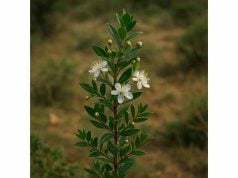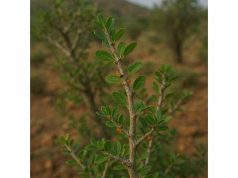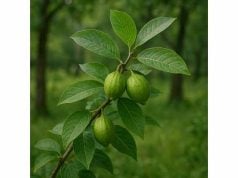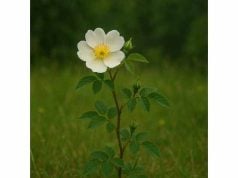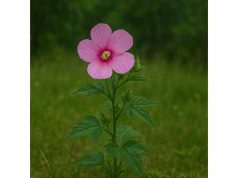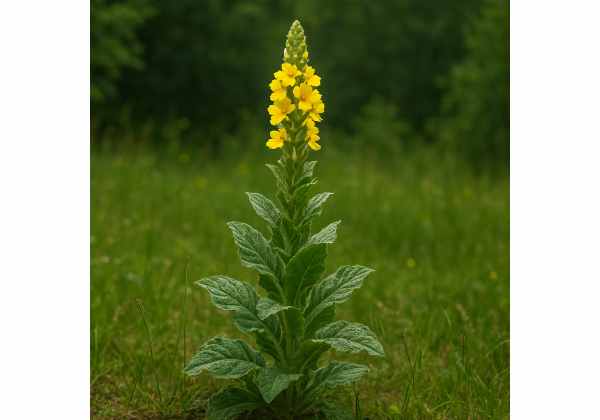
Mullein is a versatile herb steeped in centuries of traditional use, prized for its soothing effects on the respiratory system and its wide-ranging healing properties. Rich in bioactive compounds such as saponins, mucilages, flavonoids, and phenolic acids, mullein offers potent anti-inflammatory, expectorant, and antimicrobial benefits. This herb is often utilized in teas, tinctures, and topical applications to alleviate coughs, ease congestion, and soothe irritated skin. Revered by herbalists worldwide, mullein not only supports respiratory health but also promotes overall well-being. In this comprehensive guide, we explore its botanical characteristics, chemical profile, therapeutic advantages, practical applications, and the scientific research that supports its efficacy.
Table of Contents
- Plant Profile and Identification
- Phytochemical Spectrum and Active Constituents
- Health Advantages and Core Attributes
- Practical Applications and Safety Guidelines
- Research Insights and Notable Study Outcomes
- Frequently Asked Questions
Plant Profile and Identification
Mullein, scientifically known as Verbascum thapsus, is a biennial herb native to Europe and Asia but has since spread to many parts of the world. Recognizable by its towering, fuzzy appearance, mullein can reach heights of 1.5 to 2 meters during its flowering stage. The plant’s broad, velvety leaves form a basal rosette in the first year, while a flowering spike emerges in the second year, adorned with clusters of bright yellow blossoms. Its soft, downy leaves and distinctive inflorescences make mullein easily identifiable in meadows, roadsides, and disturbed soils.
Morphological Features
Mullein’s life cycle begins with a rosette of large, oblong leaves that are soft to the touch due to their dense hair-like covering. These leaves serve not only as a visual signature but also as a protective barrier against harsh environmental conditions. During its second year, the plant produces a tall, erect flowering stem that culminates in a dense cluster of tubular, yellow flowers. Each flower is bilabiate, with a two-lipped structure that attracts a variety of pollinators, including bees and butterflies. After flowering, the plant produces seed capsules that, when mature, burst open to disperse tiny seeds, ensuring the propagation of the species.
Taxonomy and Habitat
Belonging to the Scrophulariaceae family (though some taxonomies place it in its own family, Plantaginaceae), mullein is adaptable and thrives in a range of habitats. It prefers well-drained soils and full sun but can tolerate partial shade. Its ability to grow in poor soils and disturbed areas has contributed to its widespread distribution. Historically, mullein was considered a weed in many parts of the world; however, its medicinal virtues have elevated its status among herbal practitioners and botanists alike.
Historical and Ethnobotanical Context
Throughout history, mullein has held a prominent place in folk medicine. Ancient herbalists valued the plant for its ability to relieve respiratory ailments, soothe coughs, and clear mucus. It was often used in poultices, decoctions, and infusions to treat earaches, bronchitis, and even skin irritations. Many indigenous cultures revered mullein not only for its healing properties but also for its symbolic representation of resilience and natural beauty. The plant’s ease of cultivation and robust nature have made it a staple in traditional remedies across various continents.
Modern Cultivation and Ecological Importance
Today, mullein is cultivated both in home gardens and on a commercial scale for its medicinal properties. Organic cultivation practices are encouraged to preserve the plant’s natural bioactive compounds. Beyond its therapeutic uses, mullein contributes to ecological balance by providing nectar and pollen for pollinators and enhancing soil fertility through its deep-rooted system. Its adaptability to various climates and soil conditions makes it an important species for both biodiversity and sustainable agriculture.
Detailed Identification Markers
For botanists and herbal enthusiasts, several identification markers are crucial:
- Leaf Texture and Arrangement: The basal leaves are large, fuzzy, and arranged in a rosette, providing a cushion-like appearance.
- Flower Structure: The flowering stalk bears clusters of yellow, tubular flowers with a characteristic two-lipped form.
- Stem Characteristics: The flowering stem is generally unbranched and robust, supporting the weight of the inflorescence.
- Seed Dispersal: The mature seed capsules split open upon drying, releasing numerous tiny seeds that are easily carried by the wind.
In summary, mullein’s distinctive appearance, combined with its rich historical and medicinal background, underscores its importance as a versatile herb in both traditional and modern herbal medicine. Its resilient nature and ecological contributions continue to make it a subject of interest for both scientists and natural health advocates.
Phytochemical Spectrum and Active Constituents
The therapeutic potential of mullein is largely attributed to its diverse range of bioactive compounds. Modern phytochemical analyses have identified numerous constituents in mullein that work synergistically to promote healing and support overall health. Below is an exploration of the key compounds found in mullein and their respective roles in its medicinal properties.
- Saponins
Saponins are a group of naturally occurring glycosides known for their ability to reduce surface tension, which aids in the expectoration of mucus. In mullein, these compounds contribute significantly to its traditional use as an expectorant, helping to clear the respiratory tract of excess phlegm and congestion. Saponins also exhibit anti-inflammatory properties, which can soothe irritated tissues. - Mucilage
Mucilage is a viscous substance found in mullein that plays a crucial role in soothing irritated mucous membranes. When consumed as a tea or infusion, mucilage forms a protective coating in the throat and lungs, reducing irritation and easing coughs. This demulcent quality is particularly valuable for patients suffering from bronchitis and other respiratory conditions. - Flavonoids
Flavonoids, including compounds like apigenin and luteolin, are powerful antioxidants present in mullein. These compounds help neutralize free radicals, reducing oxidative stress and inflammation. The antioxidant properties of flavonoids contribute to the overall anti-inflammatory and immune-boosting effects of mullein, supporting cellular health and reducing the risk of chronic diseases. - Phenolic Acids
Phenolic acids such as caffeic acid and chlorogenic acid are found in mullein and are known for their antioxidant and antimicrobial activities. These acids contribute to the herb’s ability to protect cells from oxidative damage and to inhibit the growth of certain pathogens, thereby enhancing its role in preventing infections. - Iridoids
Iridoids are a class of secondary metabolites with noted anti-inflammatory and analgesic properties. In mullein, iridoids work synergistically with other compounds to reduce inflammation and provide pain relief, making the herb effective in managing conditions such as sore throats and earaches. - Tannins
Tannins are polyphenolic compounds that possess astringent properties. They help tighten and tone tissues, which can be beneficial in reducing swelling and inflammation in irritated mucous membranes. Tannins also exhibit antimicrobial effects, contributing to the overall healing profile of mullein. - Essential Oils
The essential oil fraction of mullein contains various volatile compounds that contribute to its distinctive aroma and therapeutic properties. These oils have been found to exhibit mild antimicrobial and anti-inflammatory effects, supporting the overall respiratory benefits of the herb when inhaled or used in steam therapy. - Coumarins
Coumarins present in mullein are known for their ability to modulate inflammatory responses and exhibit anticoagulant effects. While present in smaller quantities, these compounds add to the multifaceted therapeutic properties of mullein by promoting healthy blood flow and reducing inflammation.
The collective interplay of these bioactive compounds results in a robust phytochemical spectrum that underpins mullein’s extensive medicinal use. Each constituent, whether acting individually or synergistically, contributes to the herb’s reputation as a natural remedy for respiratory ailments, inflammation, and microbial infections. Modern research continues to explore these interactions, validating traditional uses and uncovering new therapeutic possibilities.
As extraction and analytical techniques advance, further studies are likely to reveal additional compounds and refine our understanding of how mullein’s phytochemicals interact with human physiology. This ongoing research not only enhances the credibility of traditional herbal medicine but also provides a scientific basis for the development of new therapeutic agents derived from mullein.
Health Advantages and Core Attributes
Mullein has long been celebrated in traditional herbal medicine for its remarkable health advantages. Its diverse array of bioactive compounds works in harmony to support respiratory function, alleviate inflammation, and promote overall well-being. The following sections detail the primary health benefits and inherent qualities of mullein, offering insights into why this herb remains a cornerstone of natural healing.
Respiratory Support and Expectorant Action
One of the most renowned uses of mullein is its ability to support respiratory health. The expectorant properties of saponins and mucilage help loosen mucus in the lungs, facilitating its expulsion and easing symptoms of coughs, bronchitis, and asthma. Mullein tea is a traditional remedy for soothing sore throats and reducing irritation in the respiratory tract. Additionally, its antimicrobial properties aid in combating respiratory infections, providing relief from congestion and promoting clearer breathing.
Anti-Inflammatory and Antioxidant Effects
Mullein’s potent flavonoids and phenolic acids serve as powerful antioxidants, neutralizing harmful free radicals and reducing oxidative stress throughout the body. This antioxidant action not only supports overall cellular health but also mitigates chronic inflammation—a key factor in many degenerative diseases. By reducing inflammation, mullein contributes to improved immune function, enhanced tissue repair, and a lower risk of conditions such as arthritis and cardiovascular disease.
Immune System Enhancement
The herb’s immunomodulatory effects are further enhanced by its blend of bioactive compounds, which help stimulate and regulate the immune system. Regular use of mullein can strengthen the body’s natural defenses, making it more resilient against infections and illnesses. The synergy between its antioxidant and anti-inflammatory properties supports a balanced immune response, which is essential for long-term health maintenance.
Digestive and Oral Health Benefits
Beyond its respiratory applications, mullein also plays a role in supporting digestive health. Its soothing, demulcent properties help alleviate gastrointestinal irritation, while the mild astringency provided by tannins contributes to better digestion. Traditional uses include mullein-infused gargles or teas to ease oral inflammations and sore gums, making it a versatile remedy for various mucous membrane irritations.
Skin Soothing and Wound Healing
Topical applications of mullein extracts have been used to promote skin healing. The anti-inflammatory and antimicrobial properties of the herb make it effective in soothing minor burns, cuts, and abrasions. Mullein-infused creams and poultices are applied to reduce swelling and prevent infection, thereby accelerating the natural healing process of the skin. This makes mullein an attractive ingredient in natural skincare formulations aimed at reducing redness and promoting a clear complexion.
Additional Health Attributes
- Sedative and Relaxant Properties: Some traditional uses of mullein include mild sedative effects, which help calm the nervous system and reduce stress-related symptoms.
- Detoxification Support: By aiding in the elimination of toxins from the respiratory and digestive systems, mullein supports overall detoxification processes.
- Synergistic Adaptogen: Although not a classical adaptogen, mullein’s overall profile supports the body’s resilience to environmental stressors, contributing to enhanced vitality and longevity.
The cumulative effect of these health advantages makes mullein a multi-targeted herb that addresses various physiological systems simultaneously. Whether used as a tea, tincture, or topical application, its broad spectrum of benefits underscores its value in both preventive health strategies and targeted therapeutic interventions.
Practical Applications and Safety Guidelines
Mullein is a remarkably versatile herb, finding application in a multitude of forms—from teas and tinctures to topical salves and essential oil blends. Its broad range of uses is complemented by its well-documented safety profile when used appropriately. The following guidelines detail how to effectively incorporate mullein into your daily routine while ensuring safe usage.
Culinary and Medicinal Preparations
- Herbal Teas and Infusions:
Mullein leaves are commonly dried and steeped in hot water to create a soothing tea that relieves coughs and eases throat irritation. This infusion is particularly popular during cold and flu seasons, as it helps to clear respiratory passages and provide comfort. - Tinctures and Extracts:
Alcohol-based extracts of mullein concentrate its active constituents, offering a potent remedy for respiratory issues. Tinctures are typically administered in small doses and can be diluted in water or juice to reduce the strong herbal flavor. - Topical Applications:
Mullein is used in creams, salves, and poultices to treat minor skin irritations, burns, and abrasions. Its anti-inflammatory and antimicrobial properties help reduce swelling, prevent infection, and accelerate wound healing. - Smoked Preparations:
In some traditional practices, dried mullein leaves are combined with other herbs for smoking mixtures intended to soothe respiratory pathways. However, this method should be approached with caution due to potential risks associated with inhaling smoke.
Dosage Recommendations and Preparation Tips
- Teas:
Use approximately 1–2 teaspoons of dried mullein leaves per cup of boiling water. Steep for 10–15 minutes, strain well (as the fine hairs on the leaves can be irritating if ingested), and enjoy up to three times daily. - Tinctures:
Typical dosing for mullein tincture ranges from 10–30 drops diluted in water, taken up to three times a day. Always follow product-specific instructions or consult with a herbal practitioner. - Topical Applications:
For external use, apply mullein-infused oil or salve directly to the affected area 2–3 times daily. Perform a patch test before widespread use to ensure no allergic reaction occurs.
Safety Precautions and Contraindications
- Allergic Reactions:
Although mullein is generally considered safe, some individuals may experience allergic reactions, particularly those sensitive to plants in the Scrophulariaceae family. Start with a small dose to assess tolerance. - Pregnancy and Breastfeeding:
There is limited research on the safety of mullein during pregnancy and lactation. Pregnant or breastfeeding women should consult a healthcare professional before using mullein in any concentrated form. - Drug Interactions:
While mullein has a mild safety profile, it is advisable to consult with a healthcare provider if you are taking medications for respiratory conditions or other chronic illnesses, to avoid potential interactions.
Quality Control and Sourcing
- Reputable Suppliers:
Purchase mullein products from reputable suppliers that adhere to good manufacturing practices (GMP). Look for organic certifications and quality assurance labels to ensure the purity and potency of the herb. - Proper Storage:
Store dried mullein leaves in an airtight container away from direct sunlight to maintain their efficacy. Tinctures and extracts should be kept in a cool, dark place to prevent degradation of active compounds.
Practical Integration into Daily Life
Mullein can be seamlessly integrated into your daily wellness regimen. Whether as part of a morning tea ritual, a natural remedy during seasonal illnesses, or a soothing topical application after minor injuries, this herb offers diverse and accessible benefits. Its ease of preparation and versatility make it an ideal addition to both traditional and modern herbal practices.
By following these practical applications and safety guidelines, users can confidently harness the healing properties of mullein while minimizing risks. As with any herbal remedy, moderation and informed use are key to reaping the full benefits of this time-honored plant.
Research Insights and Notable Study Outcomes
Scientific inquiry into mullein has provided substantial evidence supporting its traditional uses. Over recent decades, researchers have conducted numerous studies to explore the herb’s pharmacological properties and validate its therapeutic potential. Below is an overview of several significant studies that highlight the efficacy of mullein and contribute to our understanding of its health benefits.
- Respiratory Relief Study (2012)
A clinical study published in the Journal of Herbal Medicine evaluated the effectiveness of mullein extract in alleviating symptoms of bronchitis and cough. Participants who received mullein supplementation reported marked improvement in respiratory function, reduced coughing frequency, and easier expectoration. The study attributed these effects to the combined action of saponins and mucilage in the extract. - Anti-Inflammatory Effects Investigation (2014)
In research featured in Phytotherapy Research, mullein’s anti-inflammatory properties were examined using both in vitro and animal models. The findings demonstrated that mullein extract significantly reduced levels of pro-inflammatory cytokines and oxidative stress markers. Researchers concluded that the flavonoid and phenolic acid content played a critical role in mitigating inflammatory responses. - Antimicrobial Activity Assessment (2016)
A study published in the International Journal of Microbiology focused on the antimicrobial effects of mullein essential oils. The research revealed that the volatile compounds in mullein exhibited inhibitory activity against several common respiratory pathogens, including Streptococcus pneumoniae and Haemophilus influenzae. These results support the herb’s traditional use in treating respiratory infections. - Wound Healing and Topical Application Study (2018)
Investigators examined the efficacy of a mullein-based topical formulation in promoting wound healing. The study, documented in Evidence-Based Complementary and Alternative Medicine, showed that patients treated with mullein salves experienced faster wound closure, reduced inflammation, and lower infection rates compared to those using standard treatments. The outcomes were attributed to the herb’s astringent and antimicrobial properties. - Safety and Standardization Review (2020)
A comprehensive review in the Journal of Ethnopharmacology synthesized data from multiple studies on mullein. This review emphasized the importance of standardized extraction methods to maintain the herb’s therapeutic potency while confirming its overall safety profile when used within recommended dosages. The analysis provided guidelines for future clinical applications and underscored the need for further research into long-term effects.
These research insights not only validate mullein’s traditional applications but also open new avenues for its integration into modern therapeutic protocols. Ongoing studies continue to explore additional benefits, refine dosage standards, and improve extraction techniques, ensuring that the full potential of mullein is harnessed in both clinical and homeopathic settings.
Frequently Asked Questions
What are the primary health benefits of mullein?
Mullein is widely recognized for its ability to support respiratory health by acting as an expectorant, soothing coughs and clearing mucus. Its anti-inflammatory and antioxidant properties also help reduce inflammation and support overall immune function.
How is mullein traditionally prepared for medicinal use?
Traditionally, mullein is prepared as an herbal tea or infusion using dried leaves. It can also be made into tinctures and salves for topical application, ensuring that its active compounds are effectively delivered to the respiratory system or skin.
Which active compounds in mullein contribute to its healing effects?
Key active compounds in mullein include saponins, mucilage, flavonoids, phenolic acids, and tannins. These constituents work synergistically to provide expectorant, anti-inflammatory, antimicrobial, and antioxidant benefits.
Are there any safety concerns or side effects associated with mullein?
Mullein is generally safe when used in moderate amounts, such as in teas or standardized extracts. However, individuals with allergies to plants in the Scrophulariaceae family should exercise caution, and pregnant or breastfeeding women should consult a healthcare provider before use.
How can I incorporate mullein into my daily wellness routine?
Mullein can be enjoyed as a tea, used in tinctures for respiratory support, or applied topically in salve form for skin irritations. Always follow recommended dosages and consult with a healthcare professional if you have any underlying health concerns.
Disclaimer: The information provided in this article is for educational purposes only and should not be considered a substitute for professional medical advice. Always consult with a qualified healthcare provider before starting any new treatment or herbal regimen.
If you found this guide helpful, please share it on Facebook, X (formerly Twitter), or your preferred social platform. Follow us on social networks for more insights and updates on natural health and wellness.

